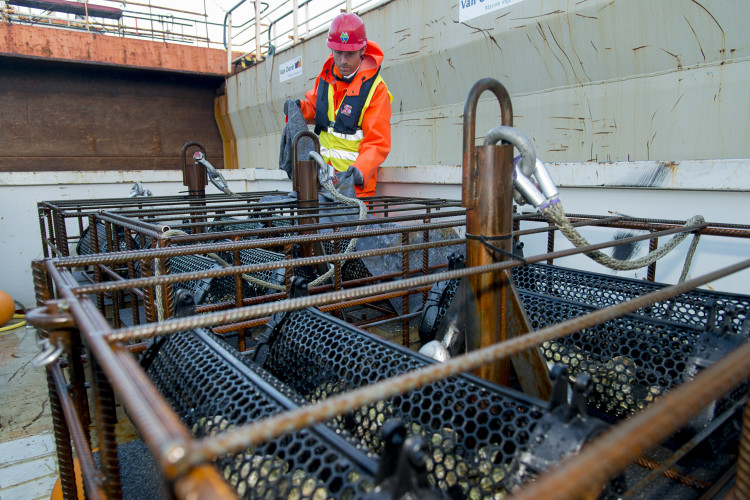It is working with the North Sea Foundation, the Natuur & Milieu organisation and Eneco on the project. Reef balls and cages containing flat oysters have been installed within the Luchterduinen offshore wind farm, 23km west of IJmuiden. The ‘Rich North Sea’ project is intended to investigate how nature conservation and sustainable energy generation can reinforce one another.
Van Oord’s installation vessel Ham 602 took the reef structures out from IJmuiden and positioned them at a depth of approximately 20m within Eneco’s Luchterduinen wind farm. The artificial reef includes reef balls and cages containing adult oysters. The total area for this pilot project is 100m by 300m.
Nature development within the wind farm will be investigated between now and 2022 by Waardenburg Consultants, SAS Consultancy, and Wageningen Marine Research. The aim is to determine whether the oysters grow and reproduce sufficiently, and whether their larvae establish themselves in the vicinity and form a reef.
Natural reefs play an important role, filtering water and acting as an attachment point and source of food, said Van Oord. Unfortunately, such reefs hardly exist any longer in the North Sea due to human intervention and diseases. During the pilot project, the participating organisations will investigate the optimum underwater conditions to enable nature to thrive within offshore wind farms.

A consortium of Belgian companies and researchers has already concluded that tasty mussels can be cultivated around wind turbine foundations (link opens in new tab).
The number of wind farms in the North Sea is set to increase greatly in the coming years and will have far-reaching consequences for both nature and spatial planning in the North Sea. Van Oord said that, in addition to generating renewable energy, offshore wind farms offer opportunities to make a positive contribution to underwater nature and improving the biodiversity.
The demonstration project is intended to contribute to providing a blueprint for underwater nature restoration at all offshore wind farms.
Trawl fishing is prohibited within wind farms, and marine life can also attach to the support towers, said the company. This makes wind farms the ideal location for reinforcing natural underwater features. “The oysters will produce larvae, leading to the development of a full-scale reef that then attracts all kinds of other species, such as crabs, fish, and seals, making the wind park a veritable nursery for underwater natural features,” said Van Oord.
Got a story? Email news@theconstructionindex.co.uk
.png)


